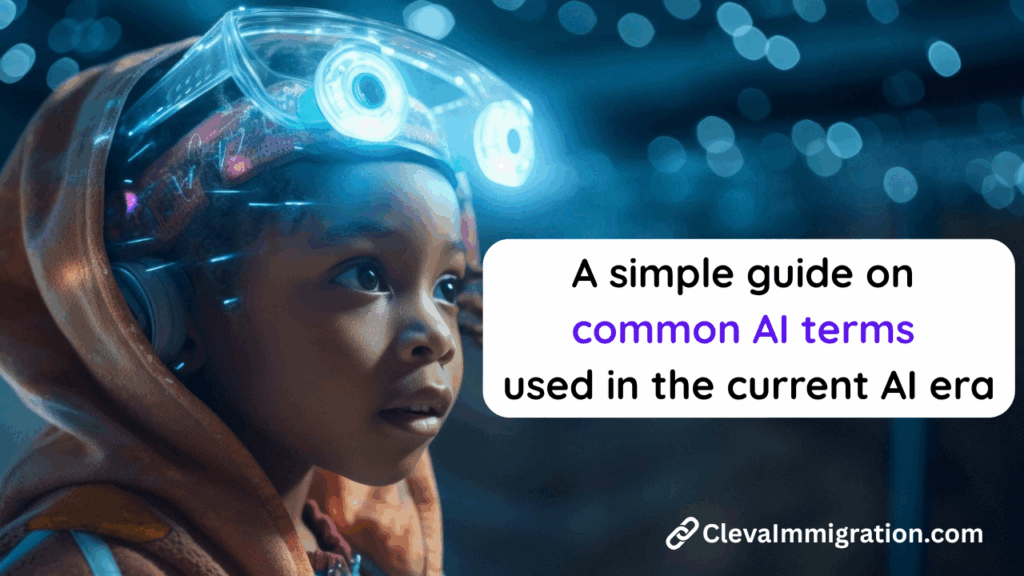Artificial intelligence is transforming our world, but its complex terminology often creates confusion. This comprehensive guide breaks down essential AI concepts in simple, detailed explanations to help you understand and stay informed the AI era.
1. Large Language Models (LLMs): The Brains Behind Modern AI
LLMs are advanced AI systems trained on massive amounts of text data (books, articles, code, etc.) to understand and generate human-like language.
LLMs work in the following way:
- Analyzes patterns in text to predict the most likely next word in a sequence
- Uses a neural network architecture called the “transformer” (invented by Google in 2017)
- Requires enormous computing power – top models use thousands of specialized chips
Examples of LLMs:
- ChatGPT (OpenAI)
- Gemini (Google)
- Claude (Anthropic)
What are LLMs used for:
- Customer service chatbots
- AI coding assistants (like GitHub Copilot)
- Personalized education tutors
- Automated content creation
Current limitations of LLMs:
- Can make up false information (“hallucinate”)
- May reflect biases in training data
- Requires careful prompting for best results
2. AI Hallucinations: When AI Gets Creative With the Truth
Hallucinations is when an AI system generates information that is incorrect, nonsensical, or fabricated, but presents it confidently as fact.
Why those hallucination happens:
- The AI predicts likely word patterns rather than recalling facts
- No true understanding of what’s accurate
- Training data may have gaps or errors
Real-world examples of AI hallucinations:
- Claiming “Shakespeare wrote Harry Potter”
- Inventing fake historical events
- Citing non-existent scientific studies
Related: Top Skills Employers Look for in Remote Job Candidates in 2025
3. Prompt Engineering: The Art of Talking to AI
Prompt Engineering is the skill of crafting effective instructions called prompts to get the best results from an AI system. A well-designed prompt can mean the difference between a vague, useless response and a precise, valuable answer.
Prompt formula examples:
“Act as an experienced [role]. Explain [concept] to a [audience] in [tone/style], focusing on [key points].”
Advanced techniques:
- Chain-of-thought prompting
- Few-shot learning examples
- Temperature and top-p adjustments
4. Multimodal AI: Beyond Just Text
Multimodal AI systems are a type AI system that can process and understand multiple types of input simultaneously these include: Text, Images, audio, video, sensor data etc.
Examples of multimodal AI applications are:
- Medical diagnosis combining scans, symptoms, and patient history
- Retail assistants analyzing products visually while chatting
- Security systems monitoring video, audio, and behavior patterns
Leading examples of multimodal AL systems: GPT-5 (OpenAI), Gemini Ultra (Google), Project Astra (DeepMind).
5. Retrieval-Augmented Generation (RAG): AI With a Memory
Retrieval-Augmented Generation (RAG) is system that combines an LLM’s language skills and a searchable knowledge base
Retrieval-Augmented Generation (RAG) works by:
- User asks a question
- System searches its database for relevant info
- LLM generates answer using found information
Benefits of Retrieval-Augmented Generation (RAG):
- More accurate than LLMs alone
- It can cite sources
- It is easier to update knowledge
Related: CNN Academy Voices from the South: Storytelling for Impact 2025 Program
7. Neuromorphic Computing: AI That Works Like a Brain
Neuromorphic computing is an AI system that Works Like a Brain, it’s computer chips are designed to mimic the human brain’s neural structure.
Key advantages of Neuromorphic computing:
- Much more energy efficient
- Better at real-time learning
- Excels at sensory processing
Applications of Neuromorphic computing:
- Advanced robotics
- Always-on AI assistants
- Smart sensors for IoT
Bonus
1. Artificial General Intelligence (AGI):
The term artificial general intelligence (AGI) is vague. However, it usually refers to AI that is better than the typical human at most, if not all, of the tasks. AGI is the “equivalent of a median human that you could hire as a co-worker,” according to a recent statement made by OpenAI CEO Sam Altman. AGI, on the other hand, is described as “highly autonomous systems that outperform humans at most economically valuable work” in OpenAI’s charter. In contrast to these two definitions, Google DeepMind defines artificial general intelligence (AGI) as “AI that’s at least as capable as humans at most cognitive tasks.”
2. AI Agent
Beyond what a more basic AI chatbot could do, an AI agent is a tool that uses AI technologies to carry out a number of tasks on your behalf, like organizing your expenses, making reservations at restaurants or tickets, or even writing and maintaining code. The term “AI agent,” however, may mean different things to different people because, as we have previously explained, there are many moving parts in this emerging field. Additionally, infrastructure is still being developed to meet its anticipated capabilities. However, the fundamental idea suggests an autonomous system that could use several AI systems to complete multi-step tasks.
Checkout some other common AI terms here: 🔗 TechCrunch’s AI Terms Guide
Which AI concept do you find most challenging? Let’s discuss in the comments!
For the latest opportunities, application tips, and immigration advice, visit clevaimmigration.com regularly and follow us on our socials: X. Instagram.


